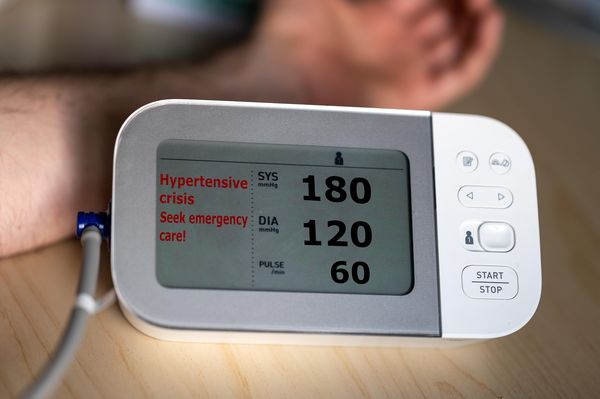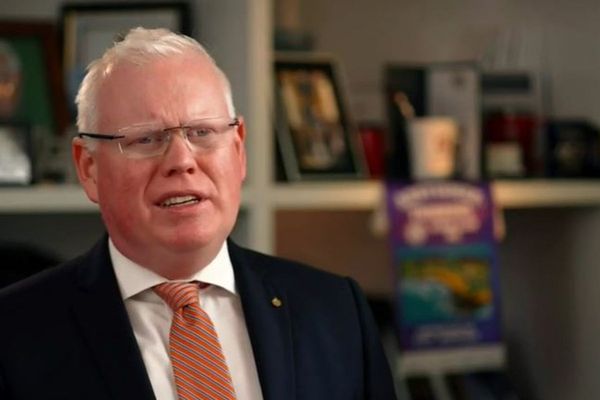
In late December, President-elect Donald Trump put pharmacy benefit managers, or PBMs, on notice.
Denouncing the $557 billion industry as “horrible middlemen,” responsible for—and “rich as hell” from— America’s incomparably high prescription drug prices, Trump vowed to get rid of them. “We’re going to knock out the middlemen,” he said at a press conference at Mar-a-Lago.
Trump is hardly the first to go after PBMs. They make up an industry whose stated purpose is to help employers and other health care purchasers lower the cost of drugs, but for decades they’ve been accused of doing the opposite—and driving up spending through opaque, profit-driven pricing tactics.
Indeed, condemnation of PBMs is one of the rare points where Trump can find common cause with progressive lawmakers like Elizabeth Warren and activist regulators at Joe Biden’s Federal Trade Commission, which dropped a report just days before Trump’s inauguration accusing the biggest PBMs of price gouging. At a time when consumers’ frustration with the health care system has reached new peaks, taking on these little-understood players could give the government a bipartisan win with huge potential impact.
It’s little wonder that discontent with PBMs is so widespread. Americans spend more on medications than other countries—roughly twice as much per capita. By every measure, that spending is on the rise; by drug “list price,” the increase is astronomical—from $636 billion in 2018 to $917 billion in 2023. What exactly are PBMs saving us from, you might ask.
Employers and other health care payers despise PBMs’ lack of transparency; pharmacies complain their high jinks are driving them out of business. Consumers may not know PBMs by name, but the drug-access and cost issues that frustrate and frighten them often stem from PBMs’ decisions. More than half of U.S. adults worry about being able to afford prescription drugs; 30% couldn’t afford them at some point last year.
Meanwhile, America’s PBMs are doing quite well for themselves. The three largest—Caremark, Express Scripts, and OptumRx—which process roughly 80% of U.S. drug claims and are known as the Big Three, took in more than $430 billion in revenue in 2023. Each would rank as one of America’s 40 largest by revenue if they were stand-alone companies. Instead, they are business units of truly huge health care giants: CVS Health (No. 6 on the Fortune 500), Cigna (No. 16), and UnitedHealth Group (No. 4), respectively.
PBMs argue that despite those ever-rising drug prices, they’re saving Americans from spending billions more every year. “PBMs are the only ones in the prescription drug supply chain whose focus is on bringing down cost,” says JC Scott, president and CEO of the Pharmaceutical Care Management Association (PCMA), the industry’s trade group.
Anywhere else in the world, that argument would seem laughable. Most advanced economies negotiate drug prices based on their therapeutic value, and use regulations like price and profit caps to keep spending in check. But we are talking about America’s $4.9 trillion health care industry, a Rube Goldberg–like system of for-profit companies all vying for a bigger piece of a large but ultimately limited pie; the modern PBM is just one of the wily, many-tentacled entities at the table.
It wasn’t always this way. When PBMs first emerged in the 1960s, they had a simple administrative role: processing drug claims. Before long, they began negotiating drug prices on behalf of their clients, leveraging their purchasing power to strike better deals with manufacturers. Indeed, PBMs are a natural counterweight to big drug companies that typically charge whatever the market can bear for their products.
Over the years, PBMs developed other tools that influence the prescription drug market and patient access. They create formularies that dictate which medicines will be covered and at what price, and they build pharmacy networks and mail-order businesses that determine where beneficiaries can fill prescriptions. (Health plans, the PBMs’ customers, can use formularies to steer patients to lower-cost generic drugs, for example, or to lower-cost pharmacies.) More recently, the Big Three have even launched their own lines of “biosimilars”—basically lower-cost versions of off-patent specialty drugs.
So, what’s the problem? The industry’s transformation—and increasing concentration—have made the biggest PBMs an evermore-powerful force, with the heft to pick winners and losers. (There are a total of 73 PBMs in the U.S., but the Big Three dominate the market.) On behalf of their health plan clients, PBMs negotiate prices with both drug manufacturers and pharmacies (which, notably, they also compete with). Citing contractual gag clauses, they keep those contracted rates secret, even from the health plans paying the bill. In other words, PBMs are hardly a neutral or transparent party, and there’s lots of evidence they have often exploited their position in ways that distort the marketplace, boost their own profits, and snuff out competition.
“The crux of the issue is the conflict of interest,” says Rob Andrews, a former congressman from New Jersey who now leads the Health Transformation Alliance, a coalition of large self-insured employers focused on improving their health plans. “The central question here is whether the PBM industry should continue to be able to take income from both the manufacturer and the buyer.”
The complexity of the business and the lack of transparency with which PBMs operate have always made it hard to sort out how and where they’re making money. That has arguably become even harder as the Big Three have been absorbed by larger corporate parents. Allegations of—and settlements over— PBMs’ conduct have dogged the industry since at least the early 2000s. They’ve inspired too many lawsuits to count and, since 2017, 186 laws in 50 states.
There’s long been bipartisan support for reform at the federal level, too, and last year it seemed as if years of scrutiny had finally reached a boiling point. In July, the FTC published a damning report from a two-year investigation of the industry, and in September it sued the Big Three over “anticompetitive and unfair” practices around the sale of insulin. The House Committee on Oversight and Accountability published its own broadside, and after summoning the Big Three’s leaders to testify, committee leadership accused them of lying (and threatened them with jail time). Then a Senate odd couple—Warren, the progressive from Massachusetts, and Josh Hawley, a Republican from Missouri—introduced their Patients Before Monopolies (PBM) Act.

Congress came tantalizingly close to producing new laws in the final weeks of 2024, when an omnibus year-end federal spending bill included policies to end some of the industry’s most controversial practices—only to be scuttled at the last minute by Trump and Elon Musk and replaced by a bill that jettisoned those provisions (and many others).
Those reform efforts took aim at PBMs’ two most heavily criticized practices. One is “spread pricing,” when a PBM charges its health plan clients more for a drug than it pays to the pharmacy that delivers it, and pockets the difference. (PBMs say this is an option health plans choose.)
The other is the industry’s convoluted system of rebates. PBMs negotiate rebates with drug manufacturers based on the drugs’ list prices. PBMs typically offer better—in some cases exclusive—formulary placement to drugs with larger rebates, in part because PBMs keep a portion of rebates as profit. Many argue this system incentivizes higher list prices, which help drugmakers get better placement and more sales. One can see that trend in the data: While list-price spending hit $917 billion in 2023, net revenue for manufacturers (after rebates, in other words) was just $435 billion, according to health research firm Iqvia.
That reflects substantial savings, but there’s a lot wrong with this picture. Critics argue PBMs have historically kept an excessive share of rebate savings for themselves. (This is hard to investigate, since PBMs keep the relevant information secret.) Lower-cost drugs lose out to high-priced ones with large discounts. In all the convoluted back-and-forth, most patients and health plans aren’t charged anything close to list price. But as the September FTC lawsuit points out, those who do pay list price are among the most vulnerable: people without insurance, or insured patients who haven’t yet met their deductible.
The industry vehemently disputes accusations of unfair and anticompetitive behavior. Its representatives say their business is transparent and driven by the choices of their employer clients. They call the FTC’s findings misrepresentative and believe their practices are misunderstood. The PCMA cites as evidence the findings of a recent report—funded by the Big Three—showing that PBMs pass through nearly 100% of rebate savings to plan sponsors, and that rebates are not associated with higher growth in list or net prices of drugs.

Those conclusions may reflect recent change: As scrutiny of the industry has grown, PBMs have shifted strategies. According to an analysis by Nephron Research, rebates and spread pricing accounted for 24% of PBMs’ gross profits in 2022, down from 55% a decade earlier. Today a much greater share, 55%, comes from mail and specialty pharma businesses—which, of course, they can require customers to use. Another growing source of profit for the Big Three is their “group purchasing organizations.” On closer inspection, these units, which negotiate and aggregate rebates, look to some like a new twist on an old trick.
The broken system has inspired solutions that only add to its brokenness. A growing number of companies—more intermediaries—focus on helping patients access lower-cost drugs by not using their drug coverage. For example, GoodRx, a drug coupon company, helps millions of Americans get prescriptions for lower prices than their PBMs negotiated. Employers increasingly turn to “specialty carve-out programs” for high-cost drugs for diseases like cancer—essentially relying on a vendor to help consumers apply for drugmakers’ patient-assistance programs or other alternative funding.
There’s also a crop of aspiring PBM disrupters, including so-called transparent PBMs, which typically charge a flat fee, as well as Mark Cuban’s online pharmacy, Cost Plus Drugs, which charges customers the cost of a drug and a 15% margin. Cost Plus, like some others in this space, mostly sells generic drugs and does not accept most insurance; it’s not a solution for every patient.
The Big Three have started to copy some of these moves. Last year, Express Scripts began offering health plan customers a pricing model that mimics Cuban’s. And this year CVS’s Caremark is rolling out simplified drug pricing and pharmacy reimbursement models (which should also help lift margins at CVS’s struggling retail pharmacies).
“I think they may be starting to read the room,” says Elizabeth Mitchell, president and CEO of the Purchaser Business Group on Health, a nonprofit coalition of self-insured jumbo employers focused on getting lower-cost, higher-value health care. Still, she’s skeptical that PBMs will be an agent of good change: “They are starting to use the right words, but I don’t think that is translating into their business practices.”
Andrews, of the Health Transformation Alliance, shares Mitchell’s skepticism. But he is relatively bullish on Trump’s chances at reining in the industry. Given Republican control of Congress and Trump’s strong grip on the GOP, says Andrews, the president has a greater concentration of political power than anyone since Lyndon Johnson. “If Donald Trump is of a mind to fundamentally change the industry, he’s going to do it,” he says.
Noting Trump’s penchant for dealmaking, Andrews sketches out a scenario in which the president oversees a grand bargain on drug pricing that deals with a handful of hot issues—PBM reform, patent exclusivity, Medicare price negotiations—in one fell swoop. He acknowledges that Trump’s commitment is a big “if,” given the president’s wide-ranging, oft-changing interests. (If Trump promising to eliminate the middlemen sounds familiar, it’s because he said the same thing about PBMs in 2018; no reforms came to pass.)
What would happen to the drug market without PBMs? The industry participants and observers Fortune consulted struggle to answer that question—perhaps unable to imagine it. It’s not a job most employers could do themselves. Some suggest imposing a profit cap, like the one that health insurers currently face. Others describe a scenario in which PBMs were less conflicted; more transparent about who pays what, and why; and generally more accountable.
A more important question may be: Do we want to eliminate the middleman? Financial analysts, who tend to see PBMs as a positive influence, note that their negotiating power may be more crucial than ever given the enormous, bank-breaking demand for GLP-1 weight-loss drugs. And despite the industry’s alleged wrongdoing, the majority of employers—even among groups like Andrews’s and Mitchell’s—still rely on the Big Three. (So, for that matter, do state and federal governments.)
That could be the consequence of a Big Health Care economy where giants have squelched rivals. Or maybe it’s complacency with the status quo. “Sometimes it’s not even about dollars and cents,” says Andrews. For employers, he adds, “what drives almost every decision most employers make is, Will their employees look at their health benefit as an asset or a nuisance?” At least for now, most seem to think the benefits outweigh the burdens.
The "big three" of pharmacy benefits
Caremark
Owned by CVS Health
Founded in 1993 as MedPartners, Caremark Rx was acquired by CVS in 2007. It accounted for an estimated 50.8% of CVS's $357.8 billion in revenue in 2023.
Express Scripts
Owned by Cigna
Founded in 1986, Express Scripts ranked No. 25 on the Fortune 500 in 2018, the year Cigna acquired it. It's now part of Cigna's $153.5 billion Evernorth health services division.
OptumRx
Owned by UnitedHealth Group
OptumRx, founded in 2011 as part of UHG, took in $116.1 billion in 2023, accounting for 31.2% of UHG's revenue.
This article appears in the February/March 2025 issue of Fortune with the headline "America’s drug middlemen are now a $557 billion industry. Can Trump and his allies ‘knock out’ PBMs?"







